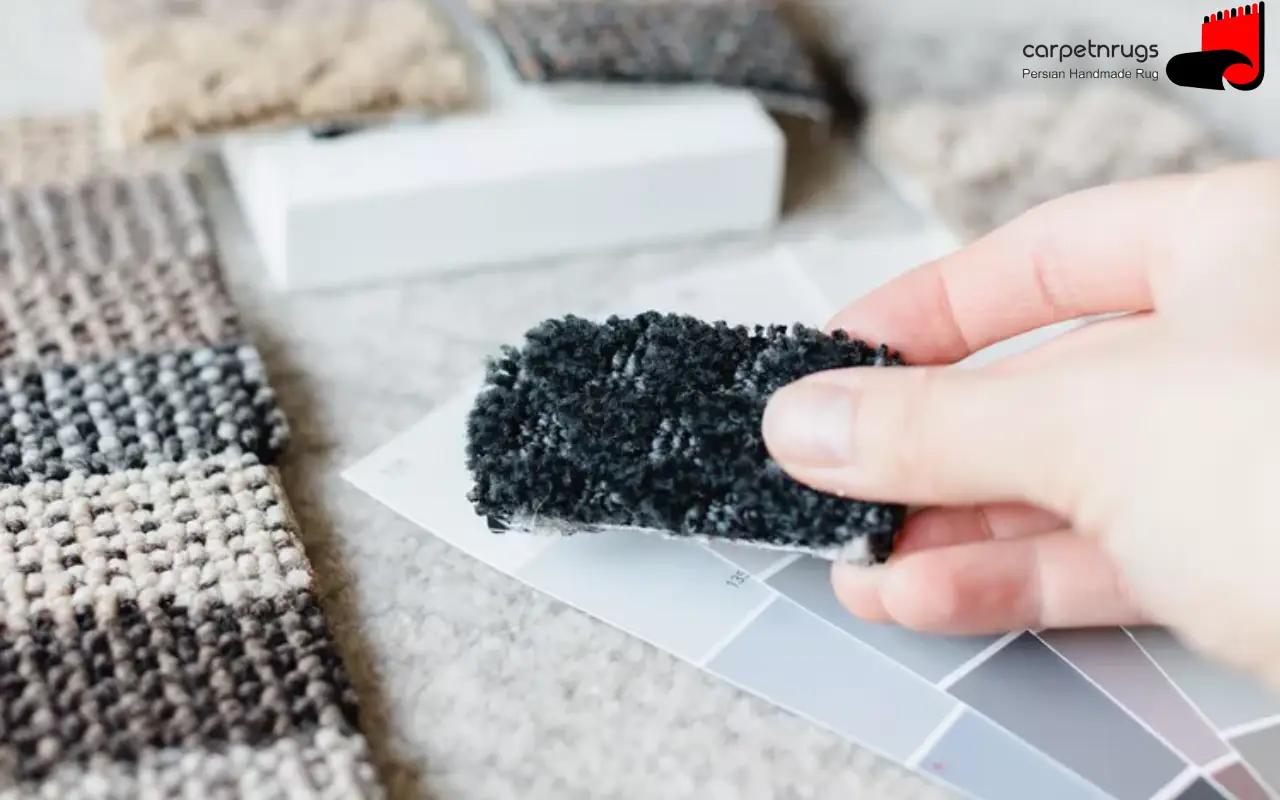
Special sale of carpet
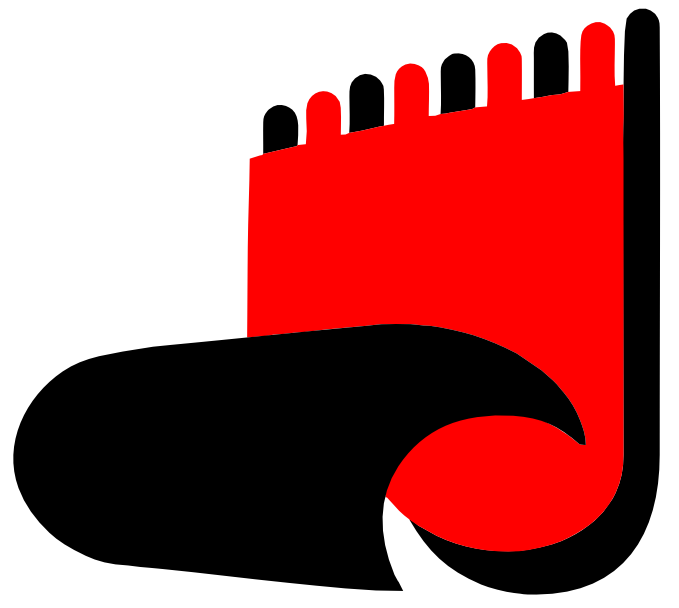
carpetnrugs
Persuan Handmade Rugs

The word carpet It is used for knotted carpet and all kinds of rugs and jajim in the shape and size that are used to spread and furnish the ground, room, tent, platform, etc. It has also been suggested for this word that carpet is a general word and refers to what is spread on the ground. Among the common people, a carpet is called a carpet that is woven by hand or machine with natural or artificial raw materials. Although carpet, pulse, felt, jajim and the like are considered carpets, they are also used in a special way for hand-woven or machine-made carpets, whose important feature is having piles.
There are many types of carpets. The variety of carpets can be seen in pattern and color, dimensions and thickness, general shape, weaving method and fiber type. Researchers and experts have provided different classifications to classify the wide variety of carpets. One of them is the classification of carpets based on the type of their main weaving equipment.
Another classification of carpets is the classification of hand-woven carpets based on their weaving techniques and methods, which can be seen in the diagram below:
It is a hand-woven fabric in which threads and wefts are intertwined in different ways. Patterns in all types of carpets are shown by wefts, which are called wefts. The type of warp and weft in all types of rugs can be cotton, wool, silk and hair (goat hair). Rugs are woven in different types based on different methods of warp and weft.
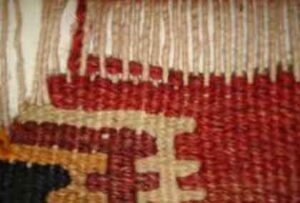
Carpet weaving is more popular in the regions of Fars, Kurdistan, Turkmen Sahara, Mazandaran, Ardabil, Semnan, Lorestan, Sistan and Baluchistan, Chahar Mahal Bakhtiari, etc. The design and role of most rugs is subjective and for this reason it has a very high variety. Rugs are used for underlays, janmaz, screw bed, rosin back and horse head. Carpet weaving methods are different in different regions. Some of the common motifs in carpet weaving are: Sarmedan, squirrel, samovar, six feathers, janagi, crab star, frame, etc., generally human, animal, plant and objects designs and patterns can be seen in the rugs.
Hand-woven is a device whose yarn and weft are intertwined and woven in different ways. The maps are shown in different types of Jajim by strings and it is called “Tar Nama”. The pattern in Jajim Shirki Pich is created by twisting colored wefts. The type of fabric in Jajim is like a rug. This handwoven fabric is mostly produced in Azerbaijan province and has various applications such as underlay, bedspread, rug, chair cover, back, etc. The motifs are four flowers, clay, claw, sunflower, etc., its edges are filled with jagged triangles.
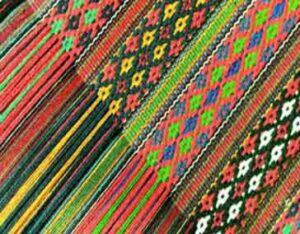
Also, in Ardabil province and most of its villages and nomads are engaged in weaving this product. The common motifs in the Jajimhayas of this region include animal motifs, human motifs and objects such as Sirga (earrings), reels, almonds, etc. The highest volume of jajim production is related to Ardabil, Khalkhal, Mishkin Shahr, Nemin, etc. tribes. Jajims of this region are divided into two categories, simple and patterned, in terms of design and patterns. Simple jajims are in the form of colored stripes and in the second type, the mentioned patterns can be seen in them. The width of Jajim is variable according to the width of the machine, which is woven in the form of boards in different sizes and sewn together, and its length varies according to the weaver’s wish.
It is a hand-woven fabric that is formed by tying colored woolen or silk thread on threads or threads and passing the weft threads from the side to them. The material of threads or threads is wool, cotton, silk or hair. Patterns in the carpet are shown by knots (piles) and are mostly executed on pre-designed maps. The height of the piles is maximum 2 centimeters and one or two wefts are used in each row of weaving. The materials of the wefts are wool, cotton, silk and They are rarely made of goat hair. The carpets are divided into five groups: woolen, silk, and silk And its patterns are woven. The height of the piles is at least 3 centimeters to 5 centimeters. Each row of weaving is used. Rizbauf carpets are famous for their fine and urban carpets. Different regions of Iran use different weaving methods They take
Another type of carpet is Sof, which is hand-woven like a carpet, with the difference that the background is made of thick and thin weft, and the patterns and flowers are fluffy. Weaves are made of cotton, silk, wool, or cotton.
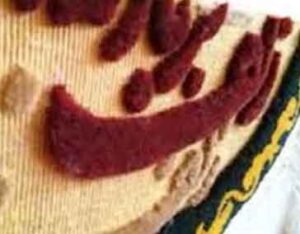
Margin: It usually covers the central design of the carpet in two forms, narrow and wide, and the presence of a wide border between the narrow borders makes the number of them odd.
Tangerine: The central part of the carpet, which is usually circle, oval, rhombus, or multi-lobed, is called tarang. In some carpets, especially nomadic carpets, the carpet may have several fringes.
Flexibility: A quarter of the middle map with a similar or mostly different shape in the four corners of the carpet text is called lakh in the term of carpet weavers.
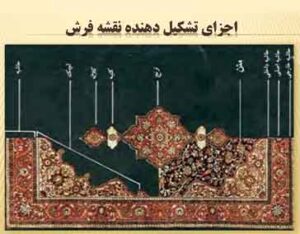
Background : It is a part in the middle of the carpet where flowers and elements of the design are printed on it.
Calle (Sardanger): At the top and bottom of the middle tranj, two motifs are often woven, which are called Sartranj or Kallah. Sometimes it is possible that these caps with a large number cover the whole environment of Taranj.
Inscription: At the border between Taranj and Sartaranj, sometimes a shape called an inscription is drawn, in which the names of persons may be written.
